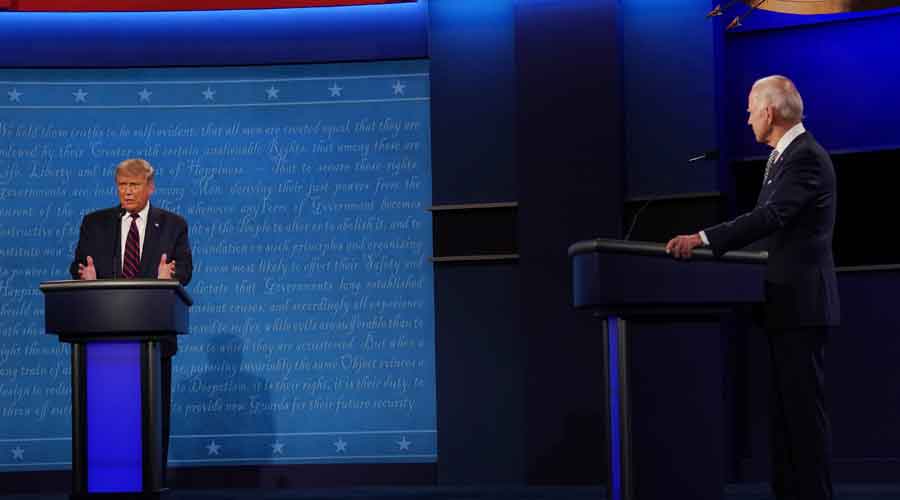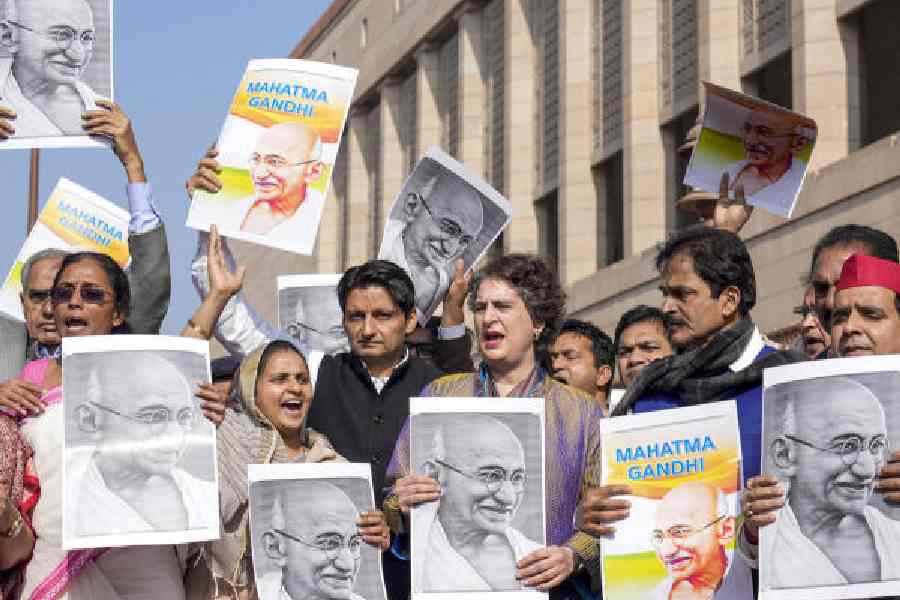For those who’ve been flummoxed by the complexities, here’s The Telegraph Online’s guide to The US Presidential Elections. Or as political observers like to call it: The Greatest Show on Earth.
Who’s eligible to vote?
About 257 million people of voting age are eligible to take part in this election. Amazingly, almost 100 million have already voted by postal ballot. That number’s particularly high because people don’t want to stand in long queues and risk a tryst with the coronavirus. By the looks of it, there has been a record turnout this time of more than 67 per cent.
What about the postal vote?
Trump has been ranting about the postal voting, saying it’s illegal, and this could lead to a slew of legal challenges after the election. A Trump fan was made the chief of the United States Postal Service (USPS) a few months ago, and he proceeded to gut the service, laying off staff and reducing services. The result: many votes may not reach by tomorrow. If Trump seems to be losing, expect him to mount a challenge to the validity of postal votes.
Which are the key ‘swing’ states?
Florida: the third largest US state with a population of 21 million, has been the key to two elections in the last 20 years. It was where George Bush Jr scraped past Al Gore in 2000 by 537 votes (Gore had solid grounds to challenge that verdict) and it was also the state that voted for Trump against Hillary Clinton. It has 29 electoral votes and could still be the key to this year’s elections. There have been indications that its older voters (who retire to its sunny climes and comprise 20 per cent of the state) are disenchanted with Trump over his brutal cuts to healthcare but that’s by no means sure. Last time Trump won Florida by 2.2 per cent and that got him all the state’s 29 electoral college votes.
Pennsylvania: it’s the fifth-largest state in the Union with 12 million people and 20 electoral college seats. Both Trump and Biden barnstormed across the state and ended their campaigns there. Pennsylvania also has a track record all the way back to John F Kennedy of switching parties. It voted for Kennedy and then for Richard Nixon in 1972. More recently, it voted for Barack Obama in two elections but then turned to Trump last time round. If Pennsylvania switches to Biden this time, it could again make a Trump return tough. He scraped past Clinton 48.17 per cent to her 47.46 last time.
Why are the smaller states crucial?
The quirks of the US presidential electoral system mean that one vote in California is not worth one vote in tiny North Dakota. So, there are a handful of smaller swing states that moved over to Trump in the last election and could be the deciding factor this time round too. Wisconsin and Michigan (along with Pennsylvania) were three swing states that moved to Trump last time. The two smaller states brought him 26 seats.
What happens if Trump refuses to concede the elections?
There could be mayhem. Biden isn’t about to step aside gracefully like Gore did in 2000. Both sides are reported to have batteries of lawyers ready for what could be the battle to end all legal battles. Trump is famously litigious and it looks like he isn’t about to move out of the White House if he can find the slightest legal grounds. He has already put up ‘non-scalable’ barricades around the White House in anticipation of demonstrations that might turn violent. More importantly, he has also ensured a conservative Republican majority in the US Supreme Court by getting Amy Coney Barrett confirmed as a judge just last week. Don’t be surprised if we don’t know the final election results by early Thursday or even long after that.
Two Americas
A map depicting the last US elections will show a sea of blue along the country’s western extremes all the way from California to Washington State. In the east, New York and New England are also with the Democrats. By contrast, a clump of Middle America states is firmly behind the Republicans. In many ways, this represents the winners and losers of the last 20 years with hi-tech and prosperous California and New York, with its bankers and other services, firmly behind the Democrats. Middle America which has seen the decline of manufacturing regard Trump as the man who has expressed their grievances. Their deeply held sense of injustice isn’t about to vanish even though Biden has promised to be the Great Unifier.
What’s the Electoral College?
The strangest part of the US presidential elections is that voters don’t actually vote for Joe Biden or Donald Trump. They vote for the 538 members of the Electoral College. That means the winner must get 270 electoral college votes to win (if that sounds like a familiar number it’s because the Lok Sabha has 543 members and the winning party or coalition needs 273 seats to win). These electors can’t do their own thing (there have been a few rebels but they have never changed an election result). They must vote according to the preferences of the people of their state. California, the country’s biggest state, has a population of 40 million and has 55 electors.
We’d have to delve back into history about how this happened so more on this later. But the way the electoral college is constituted has given the smaller ‘swing’ states a heightened say beyond their voter numbers in modern elections. Each state has one elector for each Congressional (the US lower house) district plus two electors for each state’s Senate (the upper house) seats. All the states, except two, operate on the winner-takes-all principle. So, the person with the larger number of votes in each state, gets all the state’s electoral college votes.
Hillary Clinton got 3 million more votes than Donald Trump in 2016, but still lost the elections. How come?
The electoral college gives the smaller states an advantage because each state must have a minimum of three electors. That means each of California’s 55 electors represents 727,272 people in the state. By contrast, North Dakota, one of the smallest states in the US, has a population of 800,000 and has three electors who each represent 266,666 people. This is the reason why Democrat Hillary Clinton got more votes than Trump but still lost in 2016. Incidentally, when the men who framed the US Constitution met there was a dispute about slaves who obviously didn’t get to vote. Still, the slave-owning states wanted them counted to boost their population numbers so they were counted as three-fifth of a person.
Why doesn’t the new president take over immediately?
In Britain (and in India) there’s an instant transfer of power. In Britain, the losing prime minister has to move out of his combined home and office 10, Downing Street the very same day he loses the election. In the US, there is the complication of the Electoral College. The electors cast their votes in each state capital and these votes are then counted at a joint sitting of the Senate and the House of Representatives. This sitting usually takes place on January 6 and it is followed by the swearing in of the new president on January 20. This leads to the awkward position that has global dimensions of a lameduck who is hanging around the White House and serving out his notice period. Trump has not refused time and again to commit to a peaceful transfer of power if he loses. The guessing is that if Trump is voted out, the next two months before the swearing in of the new president could be a time of unprecedented legal and potential civil turbulence.
What is in it or India?
India does not occupy a central spot in DC. The Modi-Trump mega- love fests in Houston and Ahmedabad can induce wrong conclusions in India. Trump has slapped tariffs on Indian goods and reduced visas for the Indian IT. In a map released just before the polls, Trump coloured both China and India in red, implying hostile geography.
Will there be a Kamala Harris Factor if Biden wins?
Unlikely. She is an American and will take a decision in America’s interest. Kissinger was of German origin but that did not help Germany. America is a nation of immigrants. Everyone hails from somewhere else. It is a nation without a past and Americans are not weighed down by legacy. Nor will Kamala Harris.










